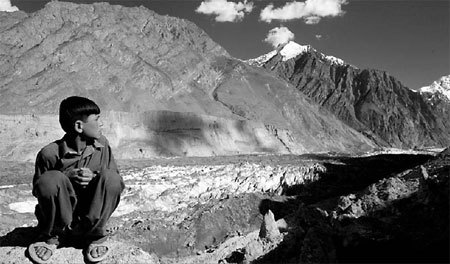The Ministry of Science and Technology and the United Nations Environment Programme (UNEP) jointly launched a three-year program yesterday to address the increasingly worrying effects of climate change in the Himalayas.
|

|
|
A boy looks out to the Hopar glacier in the central Hunza region, Pakistan, in July last year. Research has shown that the Himalayan glaciers may disappear in 40 to 50 years because of climate change. |
"The rapid melting of snow and glaciers in the past 10 years has threatened economic development and ecological balance in the Himalayas faster than any period of time in the past half century," Zhang Shigang, the coordinator of the UNEP China Office, told China Daily yesterday in Beijing.
Global warming is causing a rapid meltdown of snow and glaciers in the Himalayan region, resulting in glacial overflows along the Himalayan range, data from the independent International Centre for Integrated Mountain Development showed.
Similarly, weather patterns are becoming more unpredictable and extreme, with droughts and floods worsening, he said.
The latest program aims to improve understanding of these problems and provide first-hand data for local governments to make more constructive policies to instruct residents on adapting to climate change, Zhang said.
The program will cover five regions: the Tibet and Xinjiang Uygur Autonomous Regions, Qinghai and Gansu provinces, and Sichuan province.
The UNEP plans to provide US$1.2 million for the program. It will also use the funds to research climate change in the country's coastlines.
Science and Technology Minister Wan Gang has also called on the international community to work on a mechanism for the development of technology and its transfer to address the problems of climate change.
"Technology is central to adapting to climate change," he said.
(China Daily October 10, 2008)